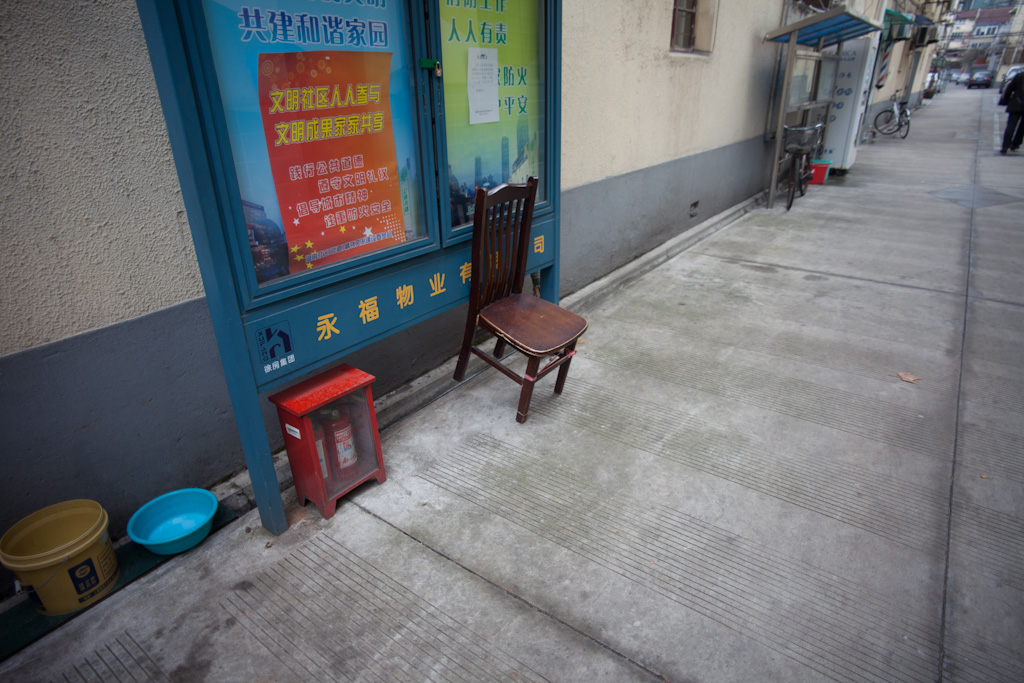Communities in China use a lot of outdoor furniture – chairs, clothes hanging, food preparation, morning ablutions all spill out onto the hutong along with the infrastructure to support these activities. Much of the furniture is outside year-round with its owner making a minimal effort to keep it protected – including when there is threat of rain angling chairs to ensure the rain runs off instead of puddling and potentially soaking the wood.
The Shaker are often lauded for their carefully observed furniture designs. Simple as it is I’d argue that this practice is just as, if not more elegant than e.g. hanging furniture since it can apply to most high-back chair designs and also works with any wall. These kinds of noticeboard frames are fairly common so the lean-forward approach with the hind legs wedged under the frame require minimal preparation for use – a subtle repositioning with one hand, if wet – wiping the surface with another.
Could the chair design better support other stakeholders in the community – for example the person who cleans/sweeps the hutong? The person owning the chair and the cleaner are unlikely to be one and the the same and designing a chair that makes it easier to sweep underneath is not a priority for the owner. One could argue that not explicitly accommodating the needs of the hutong sweeper and the extra steps required to move furniture around reinforces the current power structure, roles and responsibilities.
Not that your or my opinions matter in the enjoyment of this product but I guessing that by the metrics of most people reading this – the chair would either be considered nondescript or ugly. What would it take for you personally to put less emphasis on the visceral aspects of the design, and pay more attention to and appreciation to use? In what contexts do looks matter, and in which are they less important? (personal objects stored in public spaces). In what contexts would you grow to truly love this?
Those with a penchant for hutong furniture, including the Old Guy Chair, (and well made Chinese reinterpretations of Japanese reinterpretations of Danish design classics) will want to head over to Lost and Found, Beijing, or of course take a stroll down to your nearest hutong.
And subscribe to MakeShift Magazine here. (full disclosure – I sit on their advisory board)
Photo: close to home, Shanghai.
